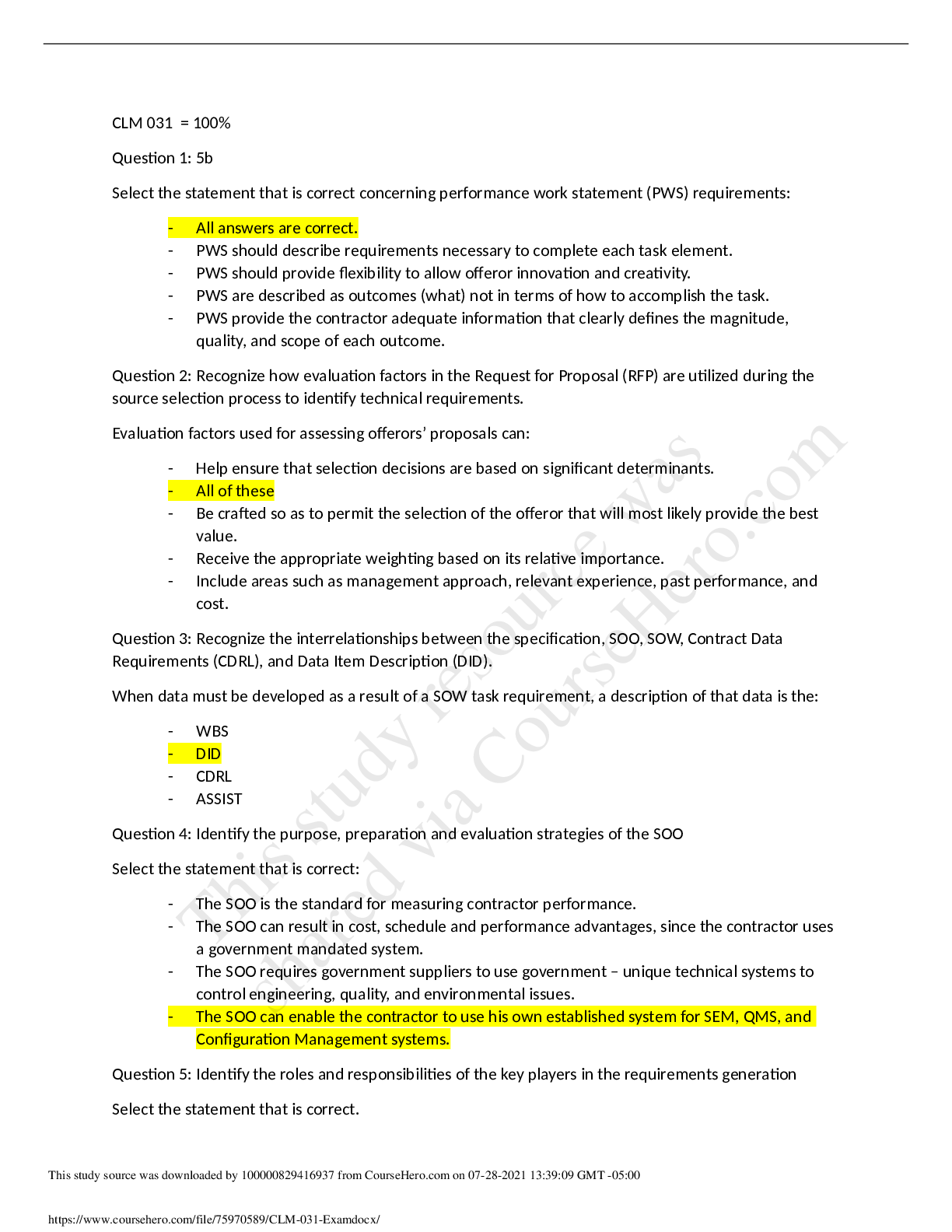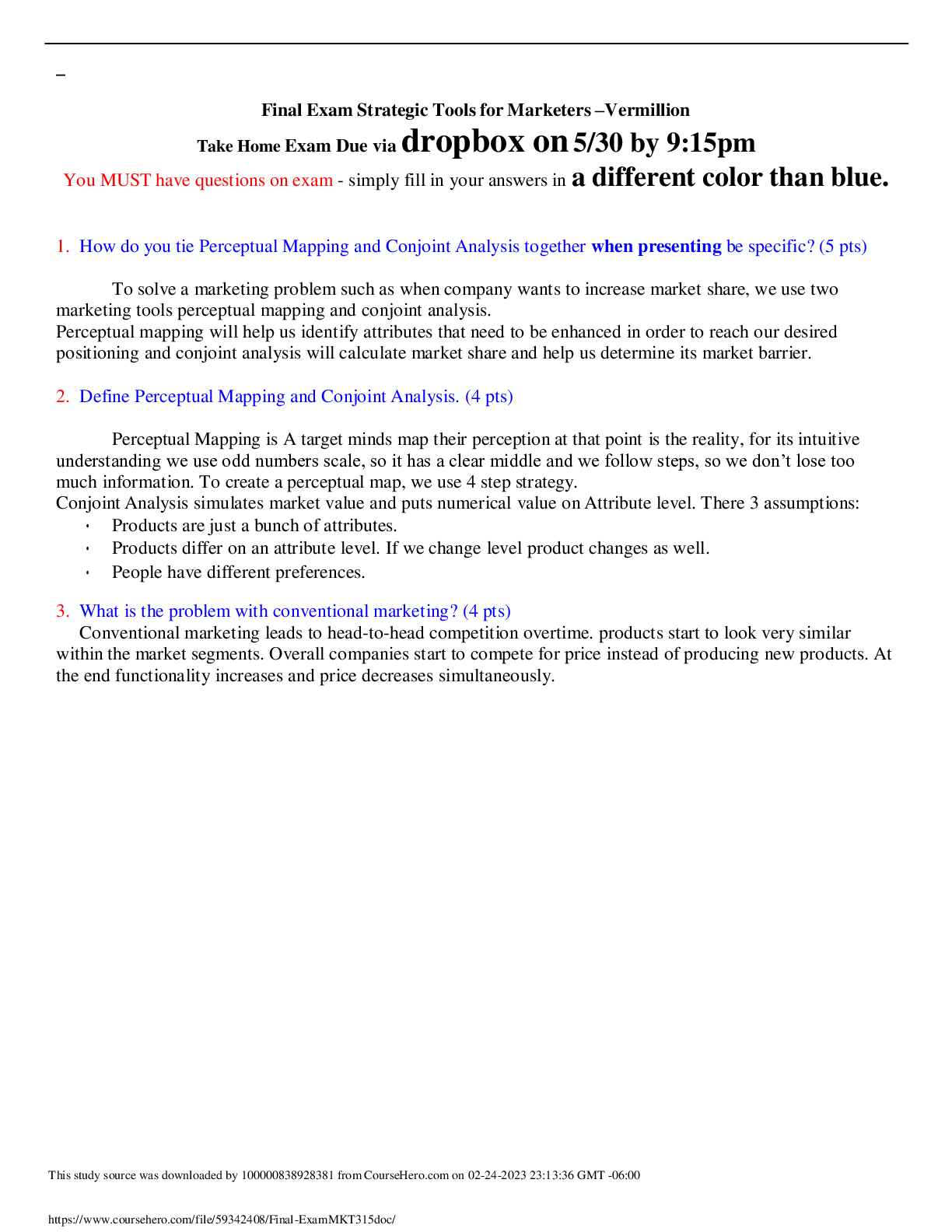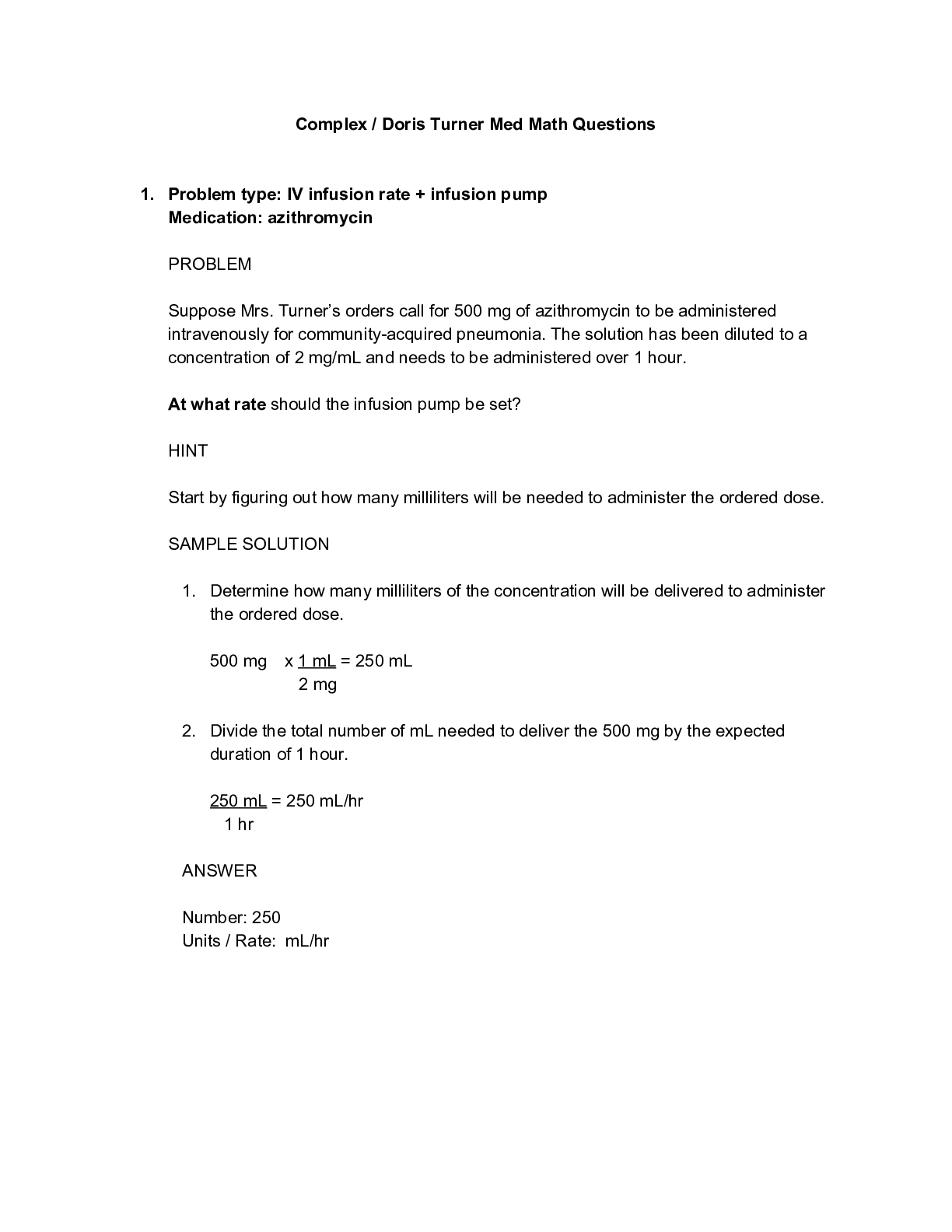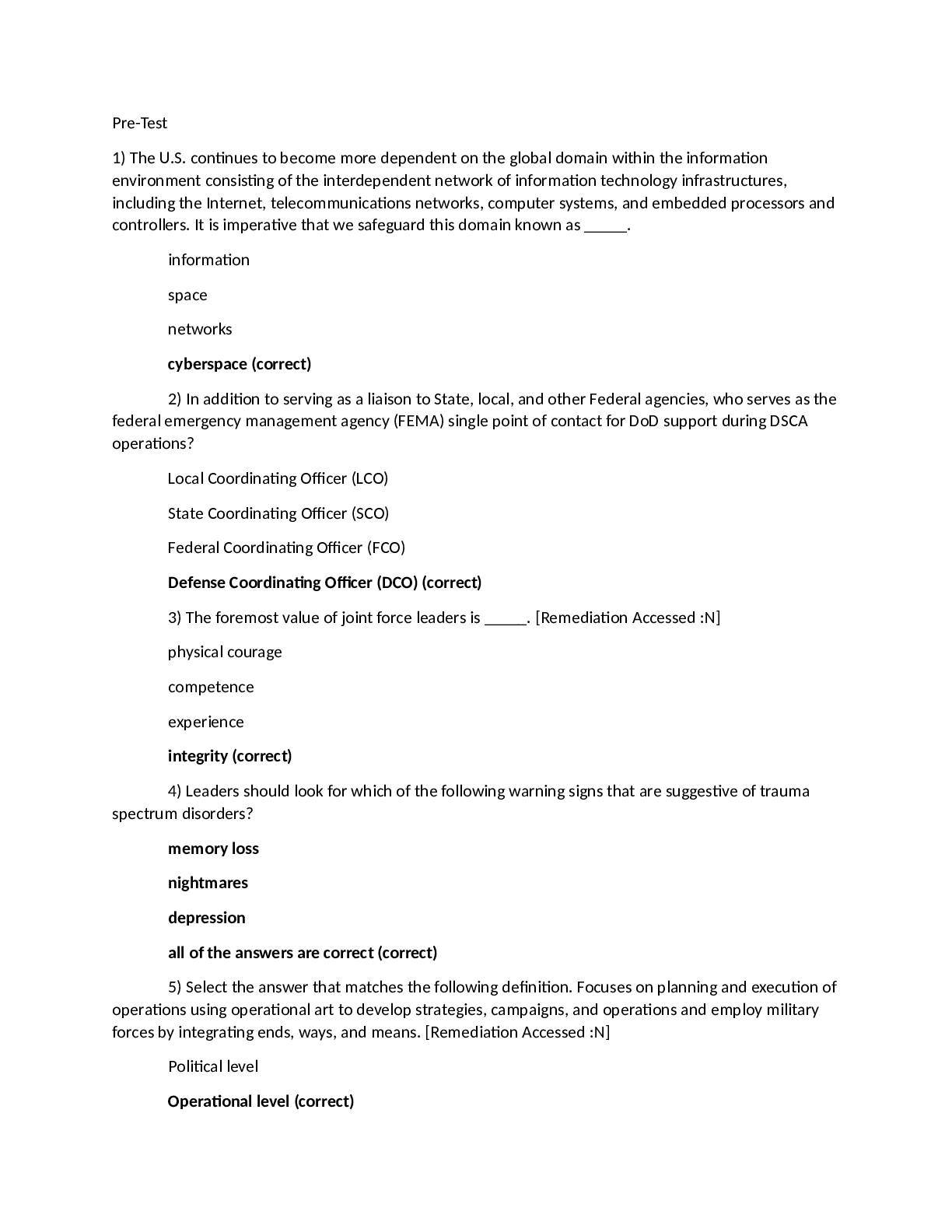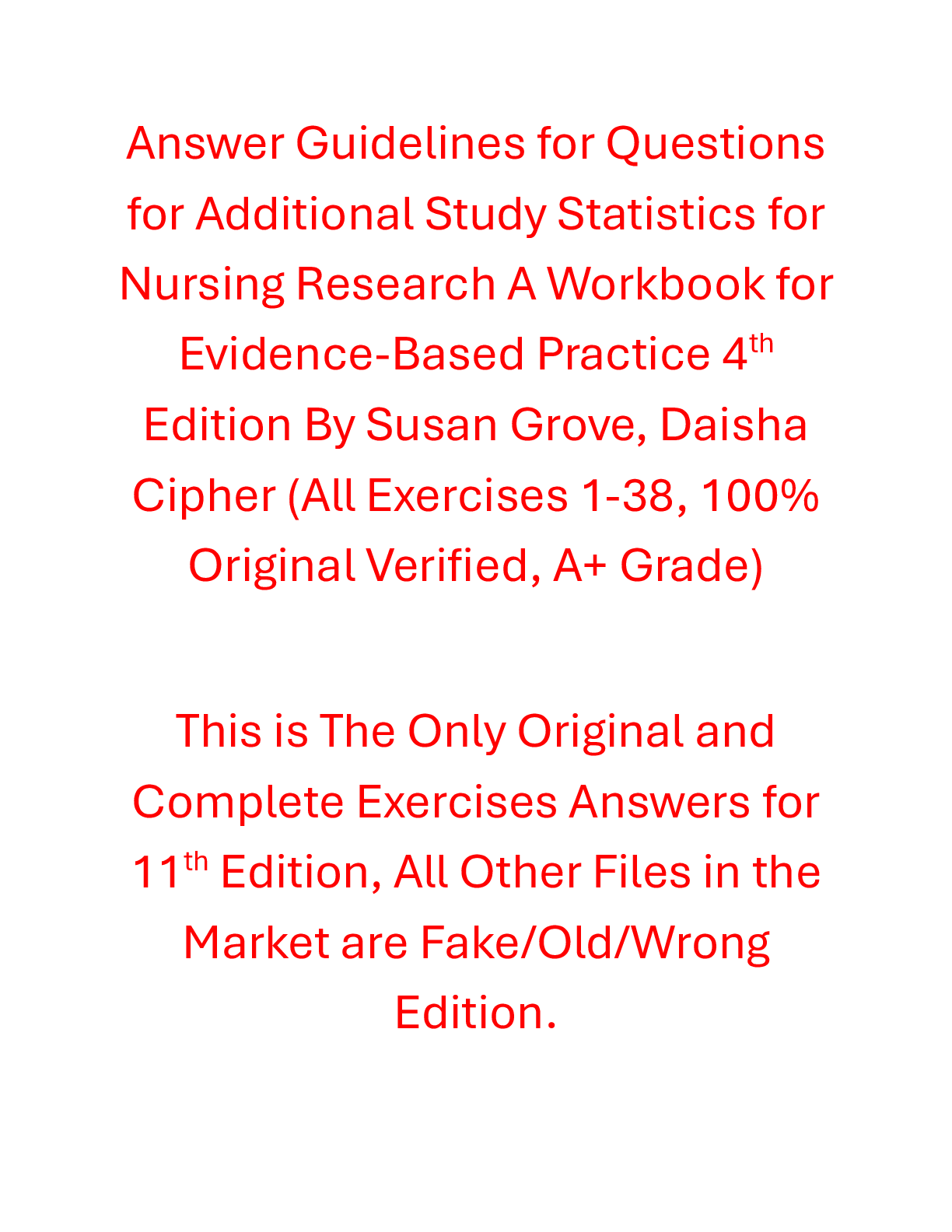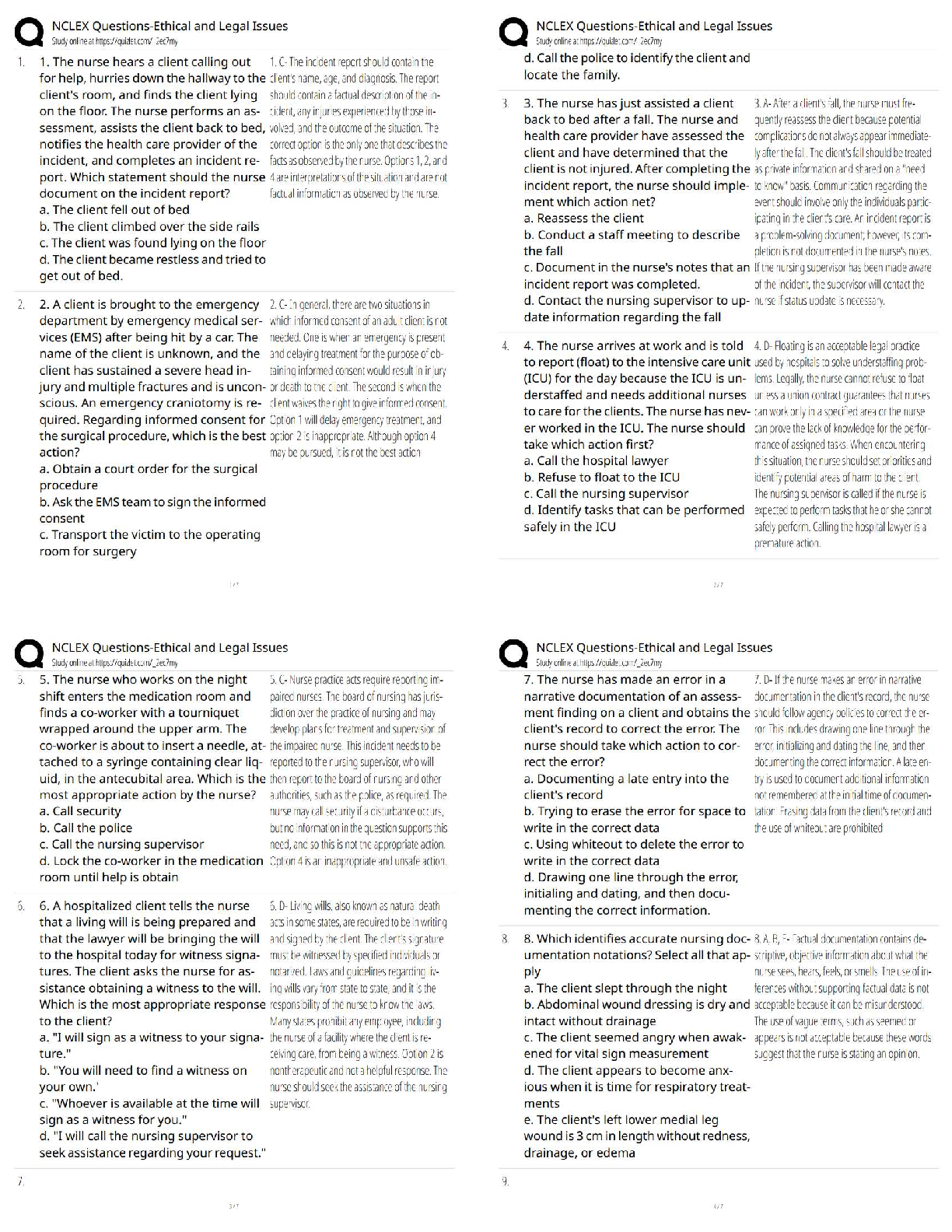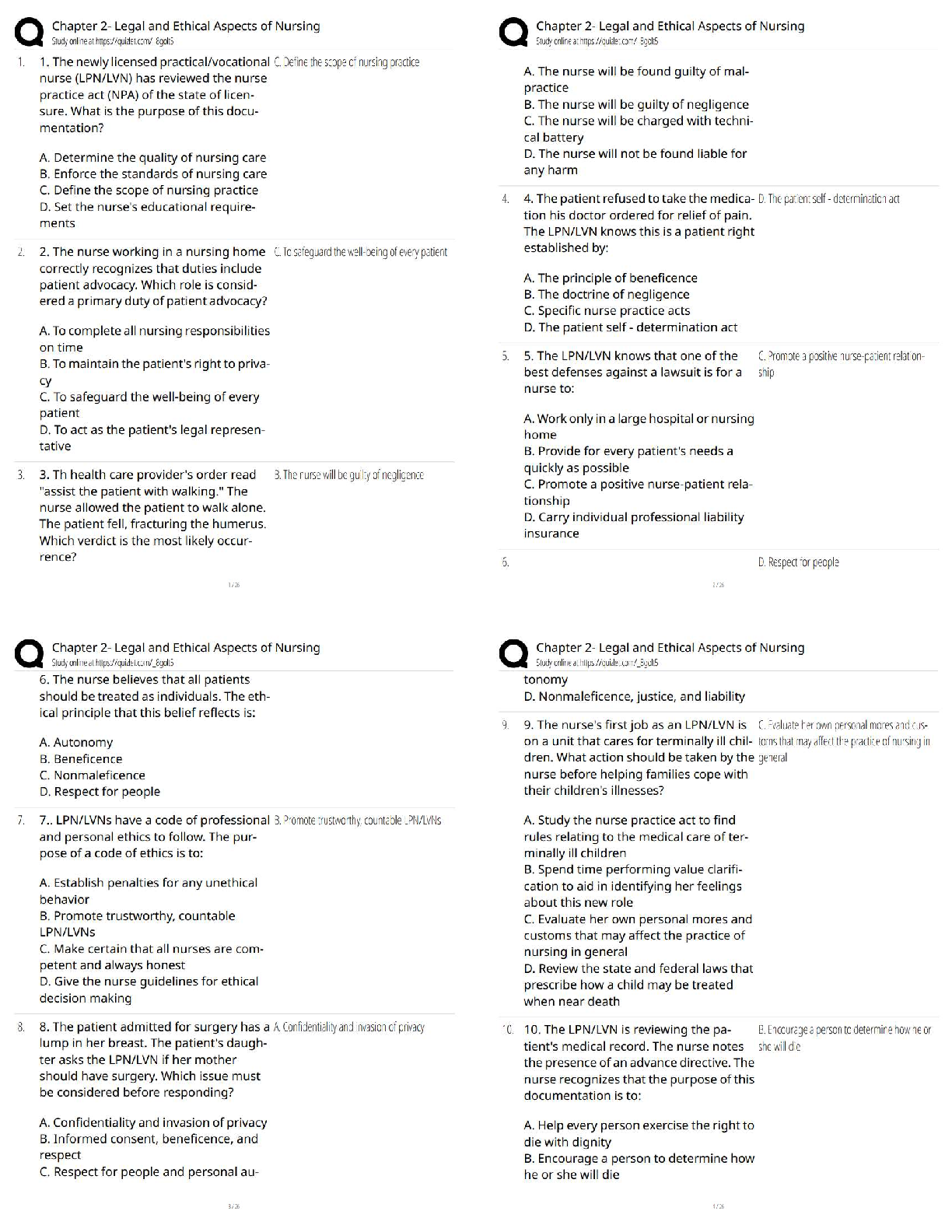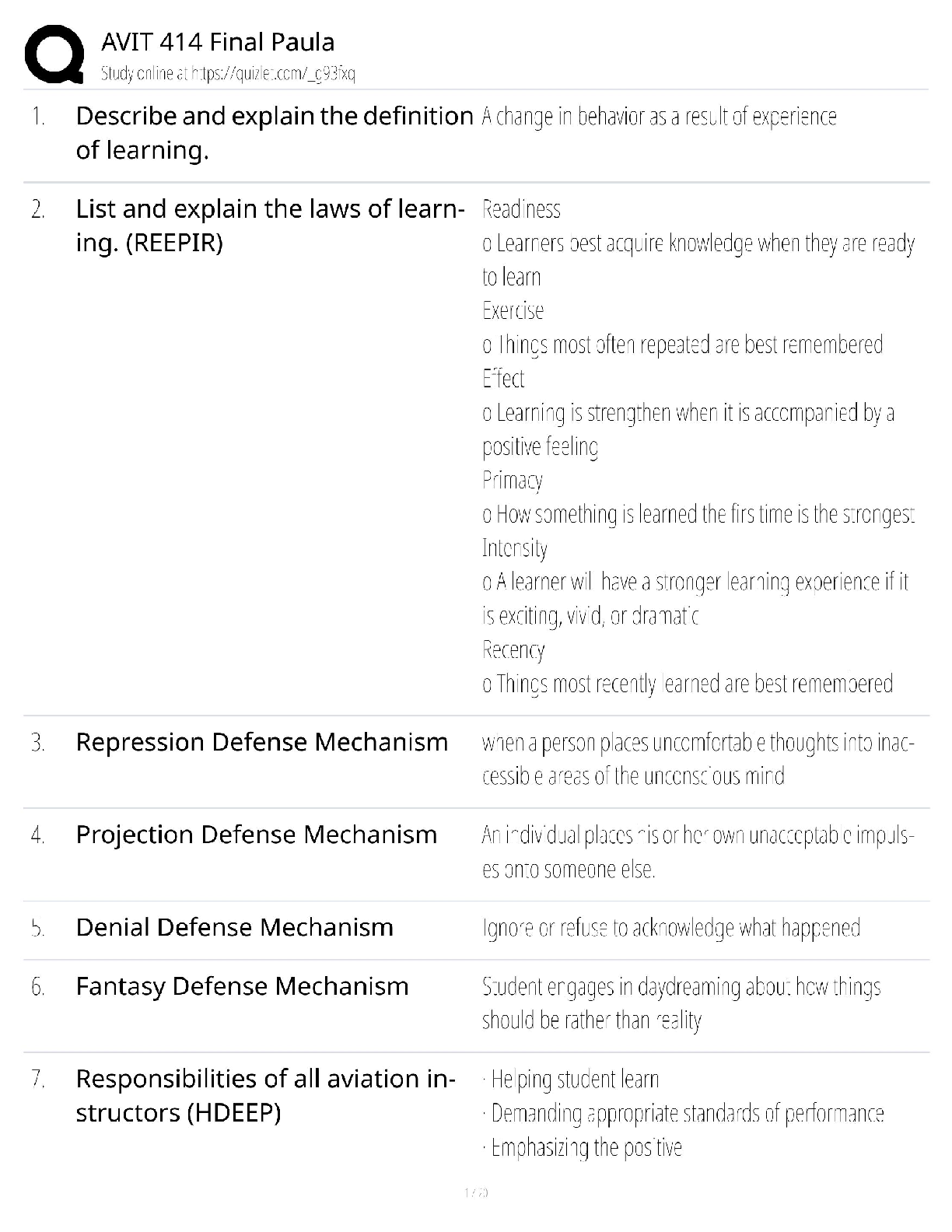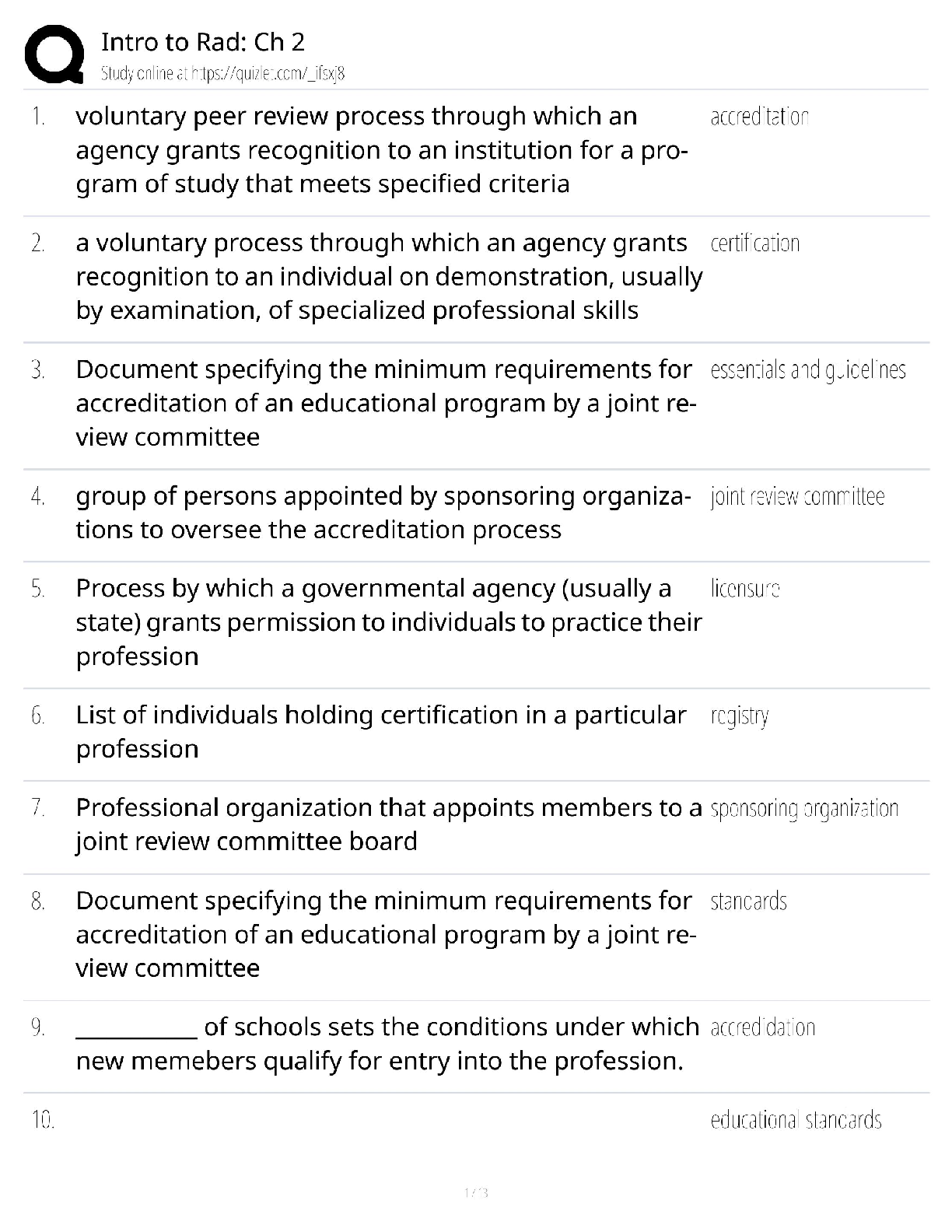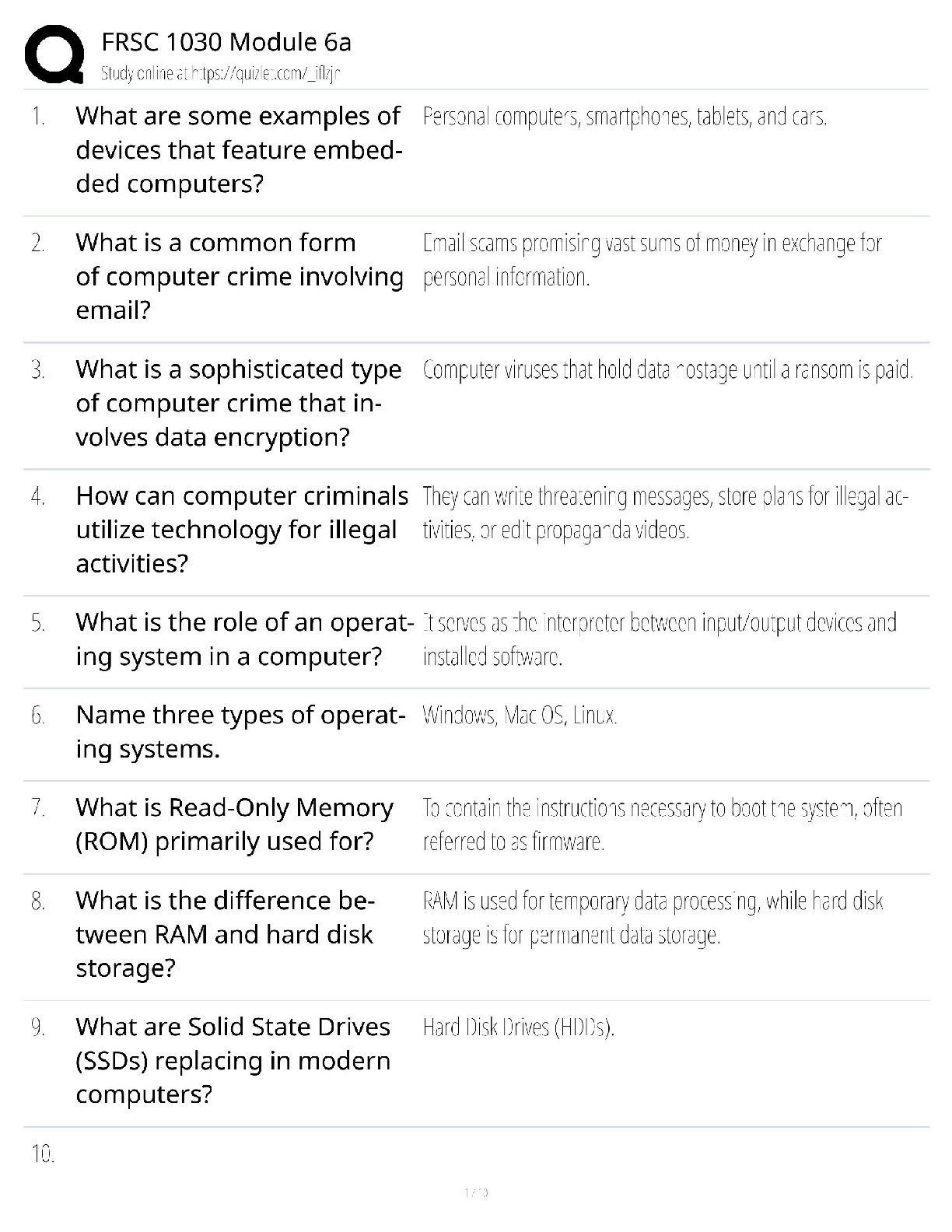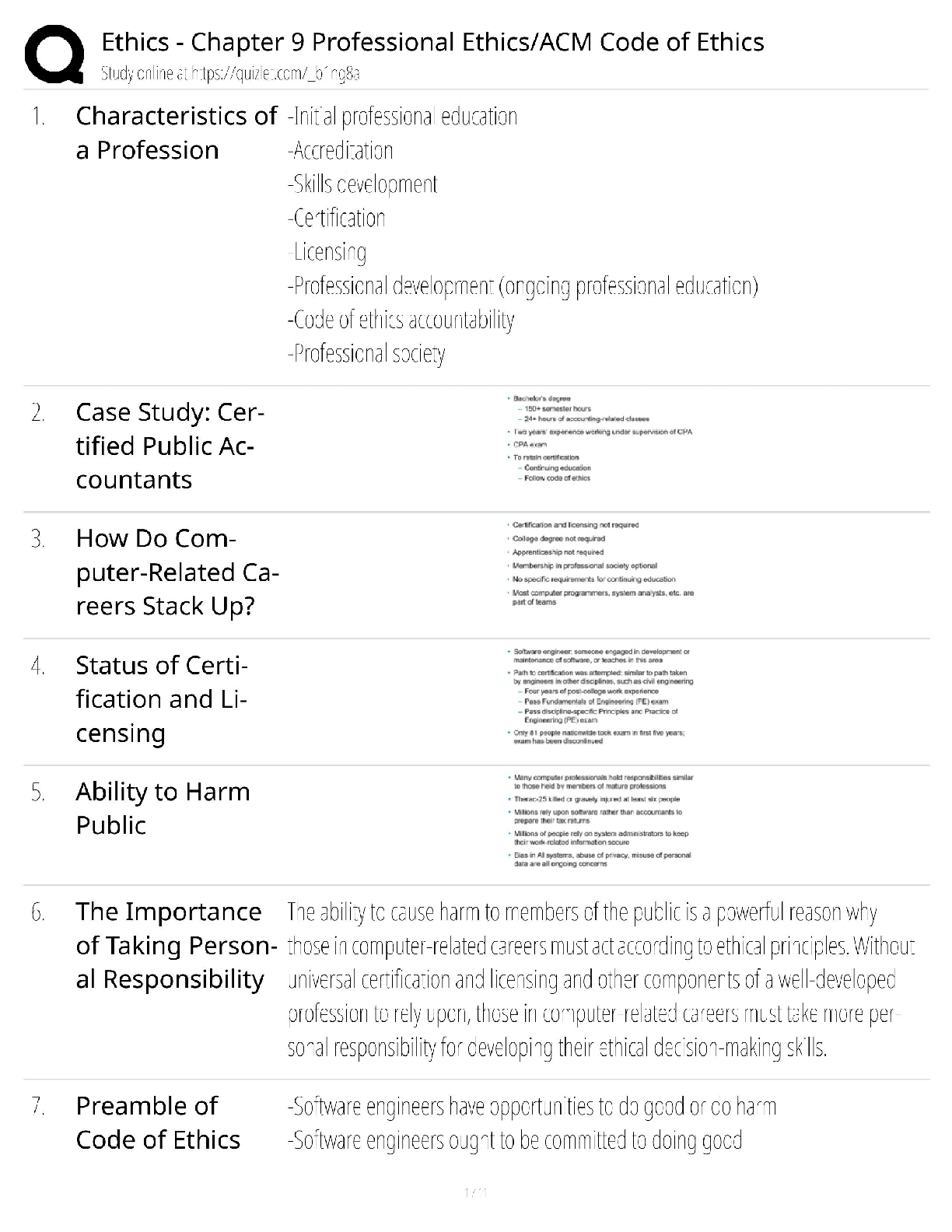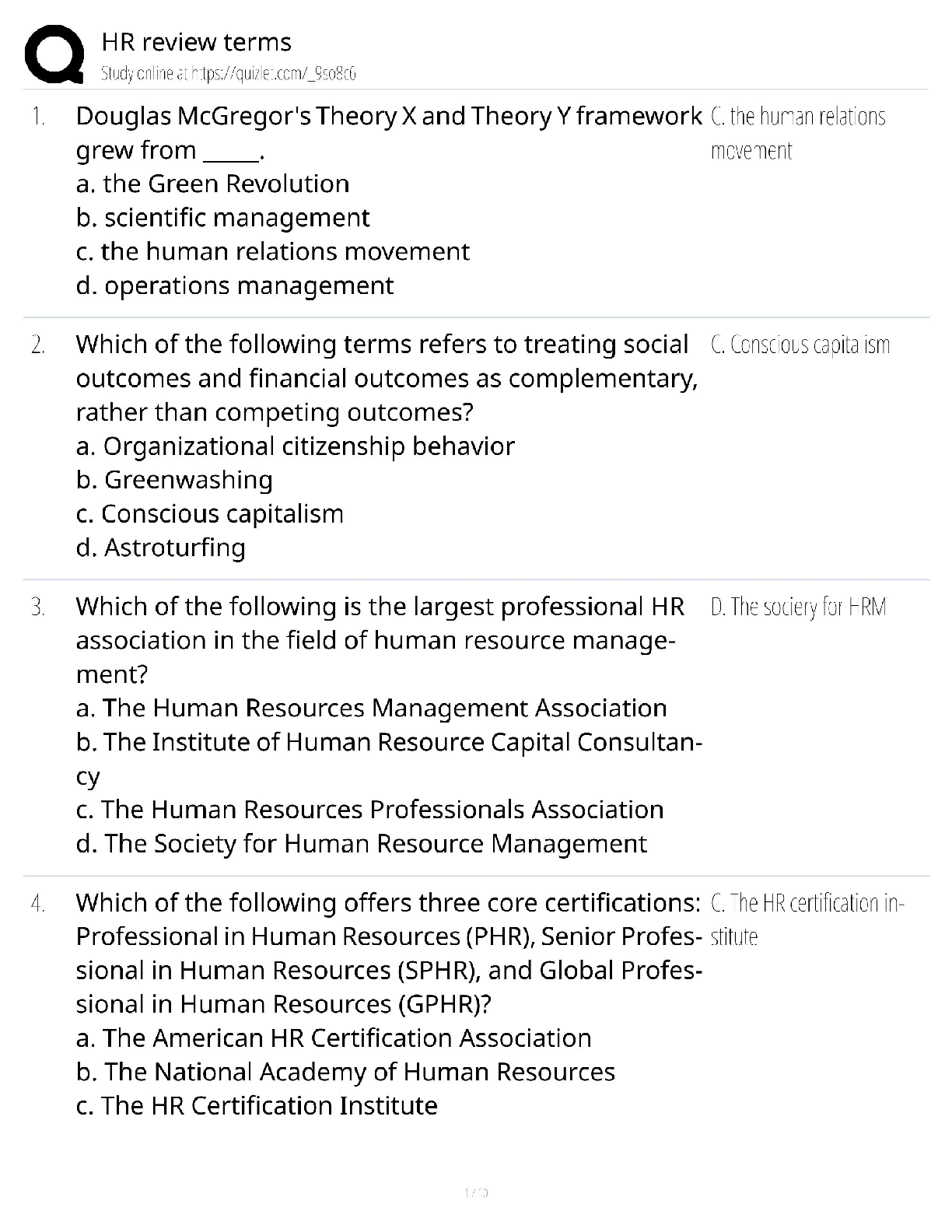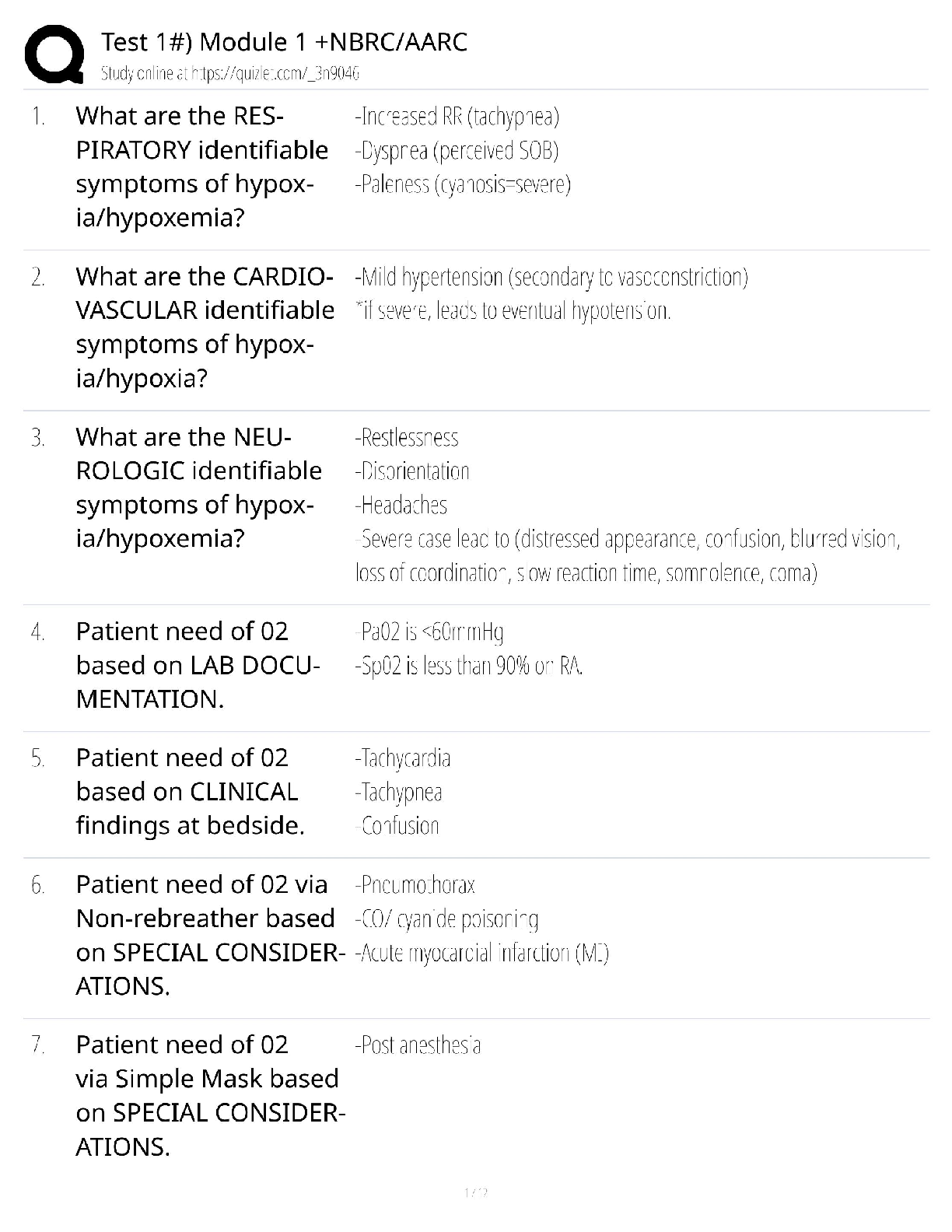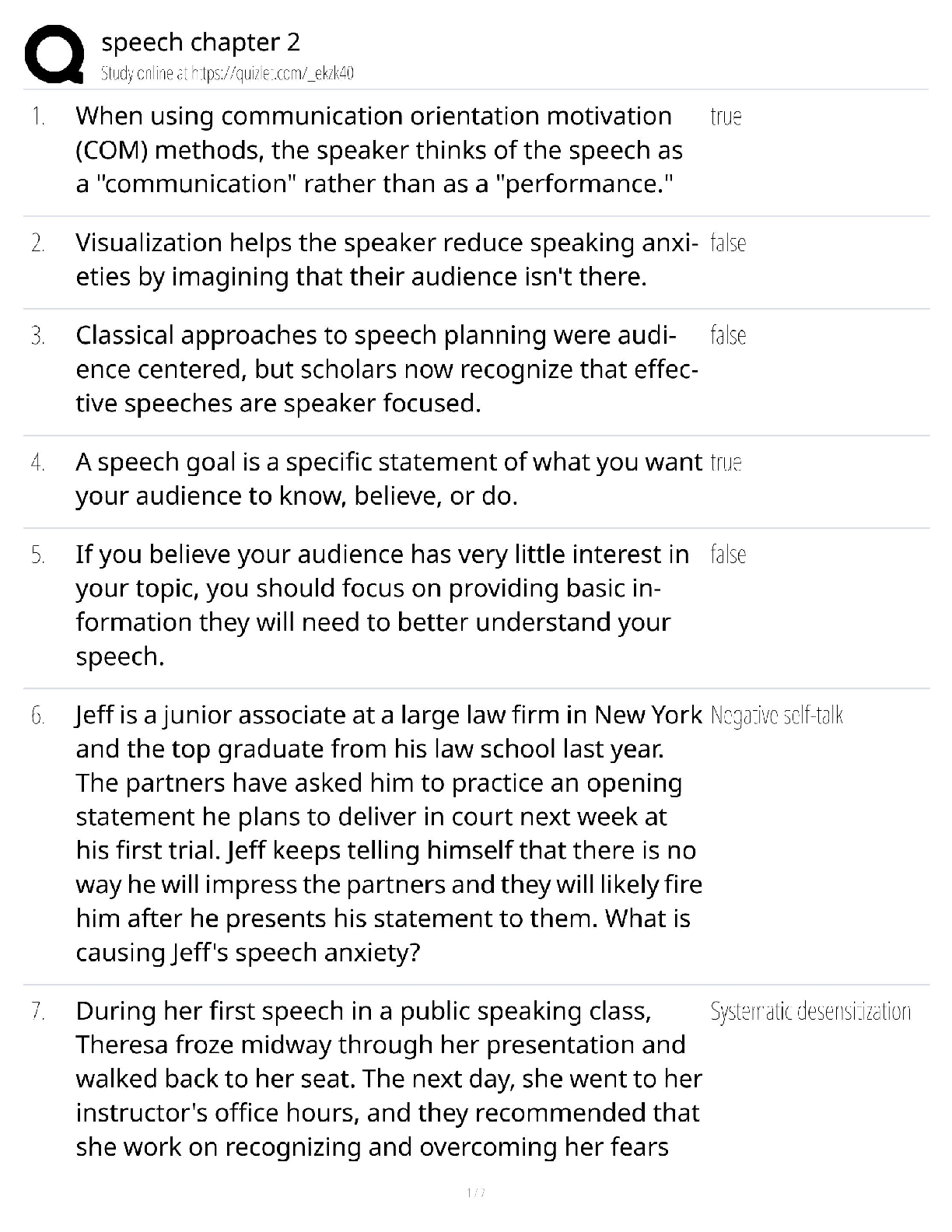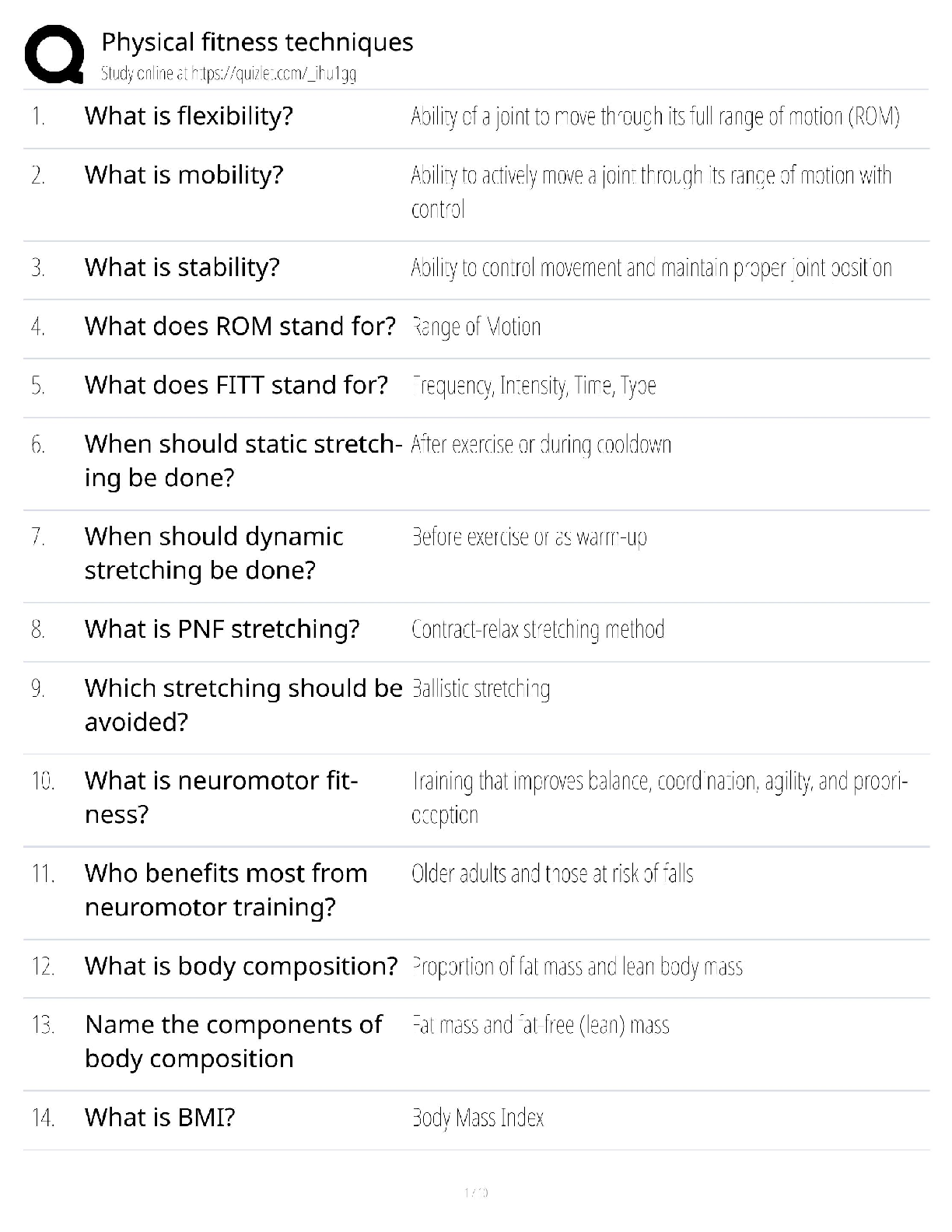Anatomy and Physiology - A&P 1 > QUESTIONS & ANSWERS > BIO201_MH_V3: Integration of Nervous System Functions (All)
BIO201_MH_V3: Integration of Nervous System Functions
Document Content and Description Below
BIO201_MH_V3 Topic 13: Integration of Nervous System Functions Started on Friday, September 10, 2021, 8:21 AM State Finished Completed on Friday, September 10, 2021, 8:51 AM Time taken 30 min ... s 37 secs Grade 35.00 out of 35.00 (100%) Question 1 Correct 1.75 points out of 1.75 Flag question Question text A nurse is caring for a patient who exhibits the following symptoms: (1) inability to maintain balance while walking (2) normal intelligence (3) can initiate voluntary movements although they are somewhat uncoordinated. (4) decreased tone in the skeletal muscles The patient is probably suffering from a condition that affected the Select one: a. midbrain. b. cerebellum. c. basal ganglia. d. cerebral cortex. e. brainstem. Question 2 Correct 1.75 points out of 1.75 Flag question Question text Two tracts found within the extrapyramidal system are the Select one: a. rubrospinal and corticospinal. b. spinothalamic and tectospinal. c. vestibulospinal and rubrospinal. d. corticobulbar and vestibulospinal. e. corticospinal and corticobulbar. Question 3 Correct 1.75 points out of 1.75 Flag question Question text Label area "C" on the cerebral cortex. Select one: a. visual cortex b. primary motor cortex c. primary somatic sensory cortex d. motor speech area (Broca area) e. sensory speech area (Wernicke area) Question 4 Correct 1.75 points out of 1.75 Flag question Question text Brain waves associated with information processing or problem solving are ____ waves. Select one: a. alpha b. beta c. delta d. theta e. kappa Question 5 Correct 1.75 points out of 1.75 Flag question Question text Damage to Wernicke area would result in Select one: a. facial paralysis. b. facial tics. c. aphasia. d. "seeing stars". e. apraxia. Question 6 Correct 1.75 points out of 1.75 Flag question Question text The region of the limbic system that is involved in the feeling of satisfaction with sex and feeding behaviors is the ______. Select one: a. amygdala b. cingulate gyrus c. hippocampus d. thalamus Question 7 Correct 1.75 points out of 1.75 Flag question Question text Label area "A" on the cerebral cortex. Select one: a. visual cortex b. primary motor cortex c. primary somatic sensory cortex d. motor speech area (Broca area) e. sensory speech area (Wernicke area) Question 8 Correct 1.75 points out of 1.75 Flag question Question text The right cerebral hemisphere Select one: a. receives sensory input from the left side of the body. b. is the dominant hemisphere for speech in most people. c. tends to be smaller than the left cerebral hemisphere. d. contains no association areas. e. is not connected to the left cerebral hemisphere. Question 9 Correct 1.75 points out of 1.75 Flag question Question text Which of the following is NOT a function of the cerebellum? Select one: a. learning to play the harp. b. keeping time with music c. sleep-wake cycle d. coordination of skeletal muscles Question 10 Correct 1.75 points out of 1.75 Flag question Question text Label area "B" on the cerebral cortex. Select one: a. visual cortex b. primary motor cortex c. primary somatic sensory cortex d. motor speech area (Broca area) e. sensory speech area (Wernicke area) Question 11 Correct 1.75 points out of 1.75 Flag question Question text Vision is dependent upon Select one: a. chemoreceptors. b. photoreceptors. c. thermoreceptors. d. mechanoreceptors. e. nociceptors. Question 12 Correct 1.75 points out of 1.75 Flag question Question text Which of the following is a somatic sense? Select one: a. smell b. taste c. touch d. sound e. sight Question 13 Correct 1.75 points out of 1.75 Flag question Question text Mechanoreceptors respond to Select one: a. compression of receptors. b. irritation of nerve endings. c. light striking the receptors. d. binding of molecules to membrane receptors. e. a change in temperature. Question 14 Correct 1.75 points out of 1.75 Flag question Question text Which of the following is a visceral sensation? Select one: a. pain b. touch c. temperature d. proprioception e. balance Question 15 Correct 1.75 points out of 1.75 Flag question Question text The pain a person experiences with acute appendicitis results from stimulating nerve endings called Select one: a. painreceptors. b. internoreceptors. c. visceroreceptors d. proprioceptors. e. appendoreceptors. Question 16 Correct 1.75 points out of 1.75 Flag question Question text Receptors that in general do not produce an action potential, but can release neurotransmitters in response to a receptor potential are Select one: a. phasic receptors. b. primary receptors. c. secondary receptors. d. tonic receptors. Question 17 Correct 1.75 points out of 1.75 Flag question Question text Upper motor neurons Select one: a. are found in the visual cortex. b. control skeletal muscles. c. are responsible for planning voluntary movements. d. are located in the prefrontal area. e. control smooth muscle. Question 18 Correct 1.75 points out of 1.75 Flag question Question text Specialized muscle fibers associated with detection of muscle length are Select one: a. muscle spindles. b. Pacinian corpuscles. c. Ruffini end organs. d. Golgi tendon organs. e. Merkel disks. Question 19 Correct 1.75 points out of 1.75 Flag question Question text Which of the following pairs is mismatched? Select one: a. visceroreceptors - associated with organs b. adaptation - decreased sensitivity to continued stimulus c. projection - sensation is perceived at the site of the stimulus d. proprioceptors - information about body position e. cutaneous receptors - associated with the viscera Question 20 Correct 1.75 points out of 1.75 Flag question Question text Match the function with the appropriate structure. The diagram illustrates sensory nerve endings in the skin. What is the function of "E"? Select one: a. detects deep pressure, vibration, and proprioception b. responds to painful stimuli c. responds to light touch and superficial pressure d. detects touch, involved in 2-point discrimination e. detects continuous touch or pressure [Show More]
Last updated: 3 years ago
Preview 1 out of 15 pages

Buy this document to get the full access instantly
Instant Download Access after purchase
Buy NowInstant download
We Accept:

Also available in bundle (1)
Click Below to Access Bundle(s)

ANATOMY AND PHYSIOLOGY 1
ANATOMY AND PHYSIOLOGY (QUESTIONS AND ANSWERS) INTRODUCTION TO ANATOMY AND PHYSIOLOGY CHEMISTRY FOR ANATOMY AND PHYSIOLOGY CELL BIOLOGY GENETICS TISSUES INTEGUMENTARY SYSTEM BONES AND SKELETAL...
By Book Worm, Certified 3 years ago
$30
14
Reviews( 0 )
$7.50
Can't find what you want? Try our AI powered Search
Document information
Connected school, study & course
About the document
Uploaded On
Dec 03, 2022
Number of pages
15
Written in
All
Additional information
This document has been written for:
Uploaded
Dec 03, 2022
Downloads
0
Views
142


